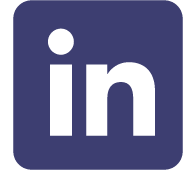As health care is undergoing significant change, the c-suite in healthcare organizations is expanding to include new roles that address new expectations in the marketplace; a recent survey by the American Hospital Association revealed that 60% of respondents recognize their senior management team to be larger today than it was three years ago. With increased regulations and responsibilities, healthcare organizations must now do more than simply treat patients; they must address risk, wellness, and the care continuum. The evolution of business models in health care also leads to the need for new skill sets in areas such as population health and medical information management. With more employed physicians, there is an increased need for compliance and integration management. Technology is rapidly growing (as are data breaches), necessitating more enhanced IT leadership. With financial penalties for poor patient satisfaction scores, there is a greater emphasis on the patient experience. All of these changes have placed what Lindsey Dunn calls a “performance burden” on leaders; CEO turnover is “at an all-time high” with the pressure to meet benchmarks, and CEOs are seeking help from more specialized counterparts. Following are a few of the newest members of the c-suite:
Chief medical information officer (CMIO)/Chief clinical information officer (CCIO)/Chief nursing information officer (CNIO). These individuals are physicians or nurses with a strong IT background, and generally focus on the interaction between clinicians and IT. Their clinical background allows them to work well with physicians and nurses to gain buy-in. In particular, the CMIO/CCIO/CNIO is the person responsible for EMR implementations, and for driving any other IT strategies with physicians and nurses, including education about the use of IT systems, ensuring expected outcomes, increasing the use of technologies, and managing data to improve patient care.
Chief innovation officer (CINO)/Chief transformation officer (CTO2). This position is focused on the strategy of transitioning an organization to the value-based care model from the perspective of the patient/consumer. It requires forward-looking, innovative, “big picture,” “out-of-the-box” thinkers to move the organization into the future, but also requires someone who is very knowledgeable about healthcare regulations as a framework for this change. The ability to persuade, change management skill, strong leadership skill, a basis in finance, and a strong business background are necessary. This can be a varied role, addressing areas such as patient access, technology, and patient interaction.
Chief data analytics officer (CDAO)/Chief data officer (CDO). This position can fall under many departments, such as IT, strategy, or finance, as data is present throughout a healthcare organization. This individual is a strong project manager with the ability to organize analytics across the organization, managing data and leveraging analytics tools, ensuring the storage, accessibility, and security of data. With population health an emerging area of focus, the CDAO/CDO works with the analytics of patient populations, as well.
Chief investment officer (CIO2). This individual takes the responsibility for investment activities off the shoulders of the CFO. Someone with a background in treasury or from an investment firm is often sought for the role. The responsibilities of this position for the healthcare organization’s investment portfolio (pensions, long-term investments, aggregate bonds, money market, ERISA, etc.) serve to ensure that the organization will remain liquid and its capital will appreciate in order to achieve strategic, financial, risk, and operational targets.
Chief performance officer (CPO). This individual lives in a world of metrics, developing measurement tools for all parts of the organization, implementing these tools, reporting the results, and collaborating with others to improve them. This position represents the confluence of HR and finance, integrating global workforce planning with financial planning and growth priorities. He or she is in charge of all issues related to the organization’s performance.
Chief experience officer (CXO). These individuals often have a clinical background, paired with a graduate degree in business, but can also come from service industries (e.g. hospitality, marketing). They are responsible for seeing hospital operations from the patient perspective, addressing areas such as throughput, patient communication, and patient satisfaction. They must also deal with metrics, which have become more transparent to patients.
Chief strategy officer (CSO). These individuals are often MBAs or MPHs from the business or consulting world who have a for-profit focus, which gives them a fresh perspective for their charge – finding new ways to generate revenue with the retirement of the fee-for-service model. This includes work with service lines, M&A, the physician enterprise, health plans, risk, innovation, and marketing. The CSO is a key position in working with the CEO to influence the future of the organization.
Chief population health officer (CPHO). These individuals are often physicians with public health experience and an advanced degree in business or health administration. Because population health is a rather new concept, the CPHO must be able to not only lead an organization’s population health strategy, but most likely develop and implement it, as well, taking into account variations in market needs. The CPHO outreaches to payers, community organizations, and advocacy groups, so must possess the ability to influence. This position must also be visionary and understand healthcare reform, payer strategies, and change leadership. It represents the cutting edge of healthcare reform, care model redesign, and high-level strategy and operations.

